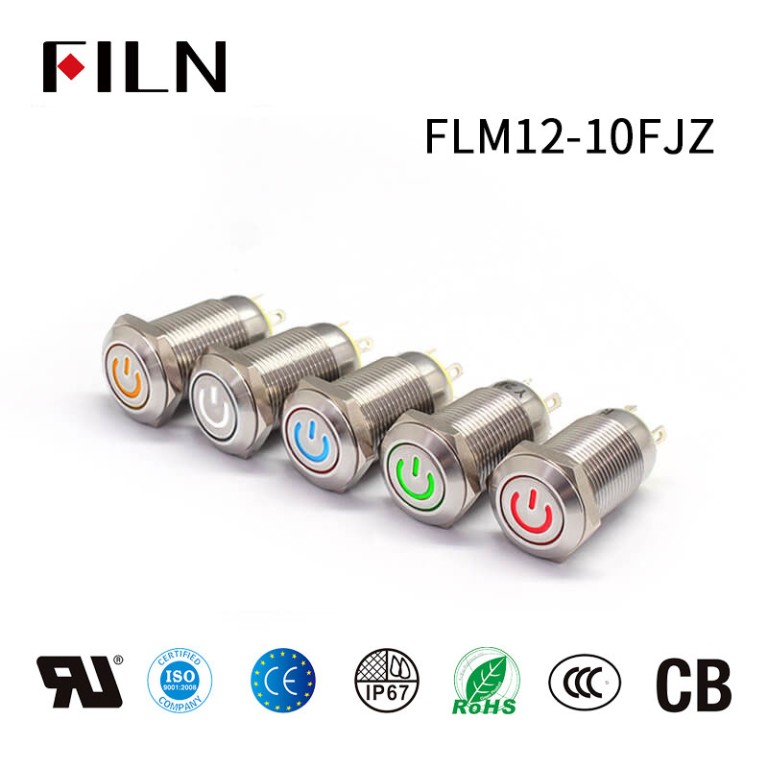Push button switches work by pressing on a button. This is a straightforward but effective way to control objects such as alarms doorbells and lamps. The push button switches can be momentary, in which the switch is returned to its initial position after release, or they can be kept by which the switch remains in the active position until the switch is reset manually. The type of switch you select is dependent on the application you’re using and control level.

Image credit: indicatorlight.com
Push Button 12V Switches The Future of Power
They are utilized in a variety of applications including marine, automotive and industrial. These switches are designed to operate at 12 volts. This makes them suitable for use in vehicles, boats, and other devices that require a reliable and efficient control system. 12V push button switch is available in a variety of configurations, including momentary and latching, and can be used to control a range of devices, from simple lights to complex systems.
Easy use is one of the main benefits of push-button switches powered by 12V. These switches are easy to install and require the bare minimum of wiring. They’re an ideal choice for both DIY enthusiasts as well as professionals. Furthermore, push button 12V switches are highly reliable and are able to withstand the demands of heavy use and make them an excellent choice for those applications where reliability is crucial.
Latching Push Button Switches The Power of Persistence
Push button latching switches are a form of switch that remains in the activated position until it’s manually reset. They are ideal for those applications where a device must be continuously on or off. For industrial control systems,, they are typically used to regulate motors and pumps.
Latching push-button switches are known for their capacity to send a continuous signal. The switch will stay in its activated state even when the button is released, providing a reliable and constant control signal. Latching button switches are highly flexible and can be applied to various different applications. From simple on/off switches as well as complex systems involving numerous relays and switches.
Marine Push Button Switches: Withstanding the Elements
The push-button switches for marine use are designed to withstand the harsh conditions encountered in marine environments. These switches are resistant to corrosion. They are typically made from stainless steel, bronze, or other materials. Marine push buttons can be employed in numerous applications, such as navigation, communication and safety systems.
One of the main issues in designing marine push button switches is the need to withstand the corrosive effect of saltwater. Manufacturers attempt to address this issue with specialized coatings and materials that offer a high degree of protection against corrosion. Marine push button switches are able to also stand up to heavy use and are extremely reliable. This makes them a perfect option for projects that require safety.
Waterproof push button switches: Sealing the Elements
These push buttons that are waterproof are made to provide a high degree of protection from water and moisture. The waterproof membrane, or coating is typically used to seal the switches. This stops moisture from getting into the switch. Push button switches that are waterproof can be employed in a range of uses, including industrial, marine, and outdoor systems.
In the end the push button switch has come a long way from their humble beginnings as just an switch to turn off or on. They are now sophisticated solutions for a range of applications including automotive, industrial and marine. 12V push button switches push button switches that latch, marine push button switches, and waterproof push button switches are a few examples of the numerous types of switches that are available. Designers and engineers who are aware of the various kinds of push buttons and their functions can create more efficient, reliable and safe systems to meet the demands of many industries. The push button switch is an easy, simple method of controlling systems and devices.
Push button switches will become more innovative as technology improves, and will incorporate new materials, wireless communications, and IoT. Knowing the various components will help you create efficient and reliable systems, whether you’re engineer, designer or a DIY enthusiast. Filn’s creative designs open up endless possibilities for the future of buttons for push-button switches.
